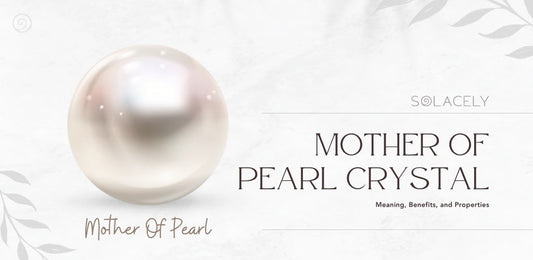Understanding the Chakra System
To embark on a journey of chakra balancing techniques, it is essential to understand the chakra system and its significance in overall well-being. Chakras are believed to be energy centers within the body that correspond to different aspects of our physical, emotional, and spiritual well-being. These invisible energy organs, described as spinning wheels or vortexes of energy, are vital centers that impact the whole body.
What Are Chakras?
The word "chakra" is derived from Sanskrit and translates to "wheel," signifying the spinning nature of these energy centers. There are seven main chakras along the spine, from the base to the crown of the head. Each chakra is associated with different qualities and aspects of life, including physical and emotional well-being, communication, intuition, and spirituality.
The Role of Chakras in Well-being
The chakras are vital in maintaining balance and harmony within the body. When the chakras are open and energy flows freely, it promotes optimal physical, emotional, and spiritual health. However, imbalances or blockages in the chakras can lead to various physical, emotional, and psychological issues. Therefore, chakra balancing techniques aim to restore energy flow in the body and promote overall balance and well-being.
Understanding the chakra system is the foundation for exploring and implementing chakra balancing techniques. By working with these energy centers, individuals can enhance their spiritual journey and address imbalances hindering their overall well-being. The following sections will delve into the seven chakras, their characteristics, and the techniques associated with balancing and harmonizing them.
The Seven Chakras Explained
Understanding the chakra system is essential for exploring the world of energy healing and spiritual growth. The human body is believed to have seven main chakras, which are swirling whirlpools of energy located along the spine from the base to the crown of the head. Each chakra is associated with different qualities and aspects of life, contributing to our overall well-being. Let's explore the seven chakras' unique characteristics and significance.
The Root Chakra
The root chakra is the foundational chakra located at the base of the spine. It represents our connection to the earth, grounding us and providing stability. The root chakra is associated with feelings of safety, security, and survival. It governs our basic needs, such as food, shelter, and a sense of belonging. When the root chakra is balanced, we feel grounded, secure, and confident.
The Sacral Chakra
Moving up the spine, we encounter the sacral chakra located in the lower abdomen. The sacral chakra is associated with our emotions, sensuality, and creativity. It governs our ability to experience pleasure, form healthy relationships, and embrace our desires. When the sacral chakra is balanced, we feel a sense of passion, joy, and emotional well-being.
The Solar Plexus Chakra
Situated in the upper abdomen, the solar plexus chakra is the center of personal power and confidence. It influences our self-esteem, willpower, and ability to assert ourselves. The solar plexus chakra governs our sense of identity and personal boundaries. When this chakra is balanced, we have a strong sense of self, motivation, and the ability to manifest our desires.
The Heart Chakra
Located in the center of the chest, the heart chakra represents love, compassion, and forgiveness. It bridges the lower and upper chakras, connecting the physical and spiritual realms. The heart chakra governs our ability to give and receive love, form meaningful relationships, and experience deep empathy. When the heart chakra is balanced, we feel love, compassion, and harmony in our relationships.
The Throat Chakra
Moving up to the throat, we encounter the throat chakra. This chakra governs our ability to communicate effectively and express ourselves authentically. It influences our ability to speak our truth, listen actively, and express our creativity. When the throat chakra is balanced, we communicate clearly and honestly, feel confident expressing ourselves, and inspire others with our words.
The Third Eye Chakra
Situated in the middle of the forehead, the third eye chakra is associated with intuition, inner wisdom, and spiritual insight. It represents our ability to see beyond the physical realm and tap into our higher consciousness. The third eye chakra governs our intuition, imagination, and visualization ability. When this chakra is balanced, we have heightened intuition, clarity of thought, and a deep connection to our inner guidance.
The Crown Chakra
At the top of the head, we find the crown chakra representing our spiritual connection and higher consciousness. It is the gateway to divine wisdom and spiritual enlightenment. The crown chakra governs our sense of purpose, spiritual awareness, and connection to the universe. When the crown chakra is balanced, we experience a deep spiritual connection, inner peace, and oneness with all.
Understanding the characteristics and significance of each chakra allows us to work towards balancing and harmonizing these energy centers. Exploring various chakra-balancing techniques can enhance our spiritual journey and promote overall well-being.
Chakra Balancing Techniques
Various chakra balancing techniques can be employed to restore the flow of energy in the body and promote overall balance and well-being. These techniques have been used for centuries in different cultures and are believed to help restore harmony and balance to the mind, body, and spirit. Here are some effective techniques for chakra balancing:
Meditation for Chakra Balancing
Meditation is a powerful practice for chakra balancing. By calming the mind and focusing on the breath or specific chakra points, meditation helps to activate and balance the chakras. Each chakra can be visualized, and affirmations or mantras particular to each can be repeated to facilitate healing and balance.
Yoga Poses for Chakra Alignment
Yoga is a holistic practice encompassing physical postures, breathwork, and meditation. Certain yoga poses can target specific chakras, helping to align and balance them. For example, grounding poses like Mountain Pose (Tadasana) and Tree Pose (Vrksasana) can help balance the root chakra. In contrast, hip-opening poses like Bound Angle Pose (Baddha Konasana) and Pigeon Pose (Kapotasana) can activate the sacral chakra.
Crystal Healing for Chakra Balance
Crystals have been used for centuries for their powerful, energetic properties. Different crystals are associated with specific chakras and can be used to balance and align them. For example, rose quartz is often used to open and heal the heart chakra, while lapis lazuli is associated with the throat chakra.
Check out our seven chakra bracelet
Aromatherapy for Chakra Healing
Aromatherapy, using essential oils, can also aid in balancing chakra. Each essential oil has unique properties that can stimulate and harmonize specific chakras. For example, sandalwood essential oil is associated with the solar plexus chakra, while lavender essential oil is often used for the crown chakra. To explore the benefits of aromatherapy for chakra healing, refer to our article on throat chakra aromatherapy and third eye chakra incense.
Incorporating these chakra-balancing techniques into your spiritual journey can enhance energy flow and promote overall well-being. Experiment with different methods, find what resonates with you, and remember to seek support from professionals or experienced practitioners if needed.
Healing Emotional Blockages Through Chakra Balancing
Emotions are closely connected to the chakras, with each chakra corresponding to specific emotional qualities. When there are imbalances in the chakras, they can manifest as emotional blockages. Traumatic events, emotional wounds, and ongoing stress can create blockages and imbalances in the chakras, affecting our overall well-being and emotional state.
Emotional Blockages and Chakra Imbalances
Emotional blockages may manifest as specific imbalances in different chakras. Here are a few examples:
- Root Chakra: Imbalances in the root chakra can lead to feelings of fear, insecurity, and lack of grounding. It may manifest as a fear of change or difficulty establishing stability in life.
- Sacral Chakra: Imbalances in the sacral chakra can result in emotional instability, difficulty expressing emotions, or feeling stuck. It may also affect one's creativity and ability to experience pleasure.
- Solar Plexus Chakra: Imbalances in the solar plexus chakra can lead to low self-esteem, lack of confidence, and difficulty asserting oneself. It may also manifest as control issues or a need for external validation.
Addressing these emotional blockages and chakra imbalances is crucial for restoring harmony and well-being.
Techniques for Releasing Emotional Blockages
Various techniques can help release emotional blockages and restore balance to the chakras:
- Self-Reflection: Self-reflection to identify and understand the emotions and experiences contributing to the blockages. Journaling, meditation, or working with a therapist can aid this process.
- Chakra Healing: Perform chakra healing practices such as meditation, visualization, and energy healing techniques specific to each chakra. These practices can help clear blockages and restore the natural flow of energy.
- Emotional Release Techniques: Explore techniques like breathwork, EFT (Emotional Freedom Technique), or somatic therapy. These techniques can help release trapped emotions and promote emotional healing.
- Energy Clearing: Clearing the energy in your environment through techniques such as smudging with sage or using sound healing tools like singing bowls or bells can help create a more harmonious, energetic space.
Seeking Support for Emotional Healing
Healing emotional blockages and restoring chakra balance is a journey that may require support from holistic practitioners or therapists. Seeking guidance from professionals well-versed in chakra healing and emotional well-being can provide valuable insights and techniques to facilitate healing. They can offer personalized recommendations and create a safe space for emotional exploration and release.
Remember, the process of healing emotional blockages takes time and patience. It is essential to approach it with self-compassion and a commitment to your well-being. By addressing emotional blockages and rebalancing the chakras, you can experience a profound transformation in your emotional state and overall quality of life.
Benefits of Chakra Balancing
Chakra balancing techniques aim to restore the body's energy flow and promote overall balance and well-being. By addressing imbalances in the chakras, individuals can experience various physical, emotional, and spiritual benefits. Let's explore the specific benefits that chakra balancing can bring:
Physical Benefits of Chakra Balancing
Imbalances in the chakras can manifest as physical symptoms in the body. By harmonizing and balancing the chakras, individuals may experience improvements in their physical well-being. Here are some potential physical benefits of chakra balancing:
- Enhanced Energy and Vitality: Balanced chakras support the smooth flow of energy throughout the body, which can increase energy levels and overall vitality.
- Improved Physical Health: Chakra balancing may help alleviate physical ailments associated with specific chakra imbalances. For example, healing the root chakra can help address stability and physical health issues.
- Stress Reduction: Chakra balancing techniques can help reduce stress and its adverse effects on the body, such as muscle tension, headaches, and digestive disturbances.
- Enhanced Immune System Function: Balanced chakras contribute to a healthy immune system, vital in defending the body against illnesses and maintaining overall well-being.
Emotional and Mental Benefits of Chakra Balancing
Emotions are intricately connected to the chakras, with each chakra corresponding to specific emotional qualities. Imbalances in the chakras can manifest as emotional blockages. Chakra balancing techniques can help release these blockages, leading to emotional and mental well-being. Some potential benefits include:
- Improved Emotional Stability: Balancing the chakras can help stabilize emotions, allowing individuals to manage stress, anxiety, and mood swings.
- Enhanced Self-Expression: Clearing and balancing the throat chakra can promote effective communication and self-expression.
- Increased Self-Awareness: Chakra balancing techniques encourage self-reflection and introspection, leading to a deeper understanding of oneself and personal growth.
- Release of Emotional Trauma: By addressing emotional blockages in specific chakras, individuals can release past emotional trauma and experience emotional healing.
Spiritual Benefits of Chakra Balancing
Chakra balancing is beneficial for the physical and emotional aspects and the spiritual well-being of individuals. By aligning and balancing the chakras, individuals may experience the following spiritual benefits:
- Heightened Intuition: Balancing the third eye chakra can enhance intuition and deepen spiritual awareness.
- Connection to Higher Consciousness: Balancing the crown chakra can facilitate a connection to higher states of consciousness and spiritual realms.
- Sense of Purpose and Fulfillment: Chakra balancing can help individuals align with their life's purpose and experience greater fulfillment and spiritual growth.
- Harmonious Energy Flow: Balanced chakras create a harmonious energy flow within the body, supporting spiritual well-being and a sense of inner peace.
Incorporating chakra balancing techniques into your routine allows you to experience the physical, emotional, and spiritual benefits of a balanced and harmonious chakra system. Remember, seeking guidance from professionals or experts in chakra healing can provide further support and deeper insights into your spiritual journey.
Incorporating Chakra Healing in the Workplace
Chakra healing, an unconventional yet highly effective approach to enhance workplace wellness and personal productivity, can be invaluable for individuals seeking to elevate their spiritual journey. By aligning and balancing the seven main energy centers located along the spine, known as chakras, individuals can experience a profound sense of well-being and inner harmony.
Chakra Healing for Workplace Wellness
Incorporating chakra healing practices into the workplace can create a more balanced, focused, and resilient workforce. By addressing the specific needs of each chakra, employees can experience enhanced well-being, improved stress management, and increased productivity.
- Root Chakra: A balanced Root Chakra provides stability and reduces anxiety and stress, crucial for maintaining composure in high-pressure work situations. Grounding techniques, such as walking barefoot or connecting with nature during breaks, can help foster a sense of stability and security.
- Third Eye Chakra: An aligned Third Eye Chakra enhances intuition and improves problem-solving, innovation, and creativity. Encouraging employees to take short breaks for meditation or engaging in activities that stimulate the imagination, like visualizations, can help activate and balance this chakra.
- Solar Plexus Chakra: A balanced Solar Plexus Chakra fosters self-confidence and empowerment, enabling employees to take on challenges and leadership roles. Encouraging self-reflection, setting achievable goals, and providing opportunities for personal growth and development can activate and balance this chakra.
- Heart Chakra: A harmonized Heart Chakra promotes love and compassion, creating a more relaxed and harmonious work environment. Encouraging acts of kindness, fostering positive interpersonal relationships, and providing opportunities for open communication can contribute to the activation and balance of this chakra.
Chakra Healing Techniques for Stress Reduction
Chakra healing techniques can also effectively reduce stress and promote overall well-being in the workplace. Here are a few methods that can help alleviate stress and restore balance:
- Meditation: Meditation is a powerful practice for chakra balancing and stress reduction. Encouraging employees to take short meditation breaks throughout the day can help them relax, refocus, and recharge.
- Yoga: Incorporating yoga poses that target specific chakras, such as root chakra yoga poses or sacral chakra mudras, can help release tension and promote relaxation.
- Crystal Healing: Introducing crystals corresponding to specific chakras, such as heart chakra healing stones or third eye chakra incense, can help balance and restore energy flow.
- Aromatherapy: Utilizing essential oils that align with specific chakras, such as throat chakra aromatherapy or sacral chakra essential oils, can have a calming and balancing effect on the mind and body.
Enhancing Creativity and Confidence with Chakra Healing
Chakra healing practices can also enhance creativity and confidence in the workplace, allowing employees to tap into their full potential. Consider the following techniques:
- Creativity: Engaging in activities that stimulate the throat chakra, such as throat chakra chanting or mantras, can help unlock creative expression and encourage innovative thinking.
- Confidence: Encouraging employees to explore solar plexus chakra exercises or incorporate solar plexus chakra herbs into their diet can help boost self-confidence and empower them to take on new challenges with courage.
By embracing chakra healing techniques in the workplace, organizations can foster a supportive and nurturing environment that promotes employees' well-being, creativity, and confidence. It's important to remember that chakra healing is a personal journey, and individuals may resonate more with specific techniques than others. Encouraging employees to explore and find what works best for them can lead to a more harmonious and fulfilling work experience.















